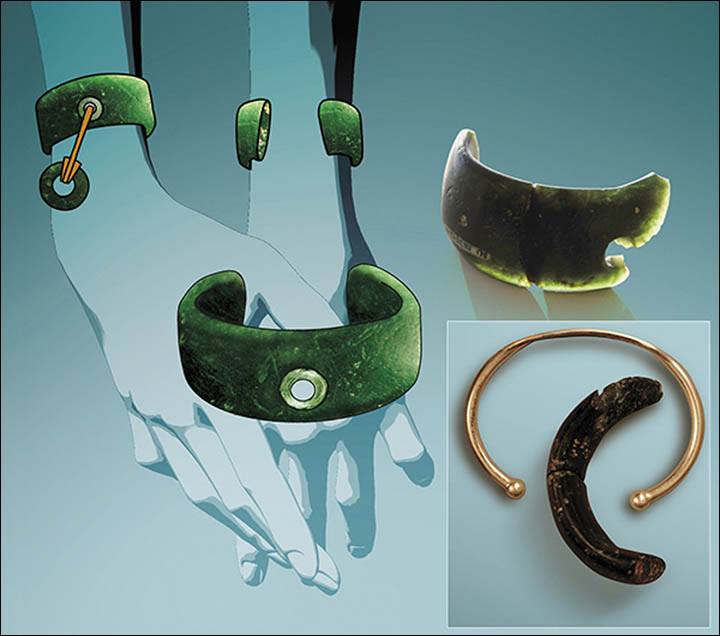It was found within a Siberian cave and is estimated to be over 40,000 years old.

Anatoly Derevyanko and Mikhail Shunkov, Vera SalnitskayaThe Denisovan bracelet made of chlorite.
A fragmented green bracelet was recently confirmed to be the 40,000-year-old creation of an ancient hominid species.
The accessory was found in 2008 in a cave alongside the bones of a woolly mammoth and the shockingly-preserved pinkie finger bone of a little girl who, scientists later determined, was not a human at all.
After extensive DNA tests, researchers concluded that the girl had brown hair, eyes and skin and was between 5 and 7 years old when she died.
They also found that she belonged to a previously unknown hominid species, which they named Denisovan, after the Siberian cave where the remains were discovered.
The Denisovans — or Homo altaiensis — are a lesser-known hominid species believed to have migrated from Africa, along with Neanderthals and modern-day humans, between 300,000 and 400,000 years ago.
Though little else is known about the species, the bracelet suggests they were much more advanced than originally suspected.
“The bracelet is stunning — in bright sunlight it reflects the sun rays, at night by the fire it casts a deep shade of green,” Anatoly Derevyanko, the director of a Russian institute of archaeology, told The Siberian Times. “It is unlikely it was used as an everyday jewelry piece. I believe this beautiful and very fragile bracelet was worn only for some exceptional moments.”

Anatoly Derevyanko and Mikhail Shunkov, Anastasia AbdulmanovaA general reconstruction of the 40,000-year-old bracelet which experts suspect was adorned with other jewels and worn on the right hand.
The chlorite accessory is carved in such a way that researchers suspect the Denisovans would have needed a drill-like tool to make such precise holes.
“The ancient master was skilled in techniques previously considered not characteristic for the Paleolithic era, such as drilling with an implement, boring tool type rasp, grinding and polishing with leather and skins of varying degrees of tanning,” Derevyanko said.
This use of advanced engineering techniques implies that the Denisovans were more advanced than the Homo sapiens and the Neanderthals — though they genetically predated both of these hominid cousins.
Skeptical that such an ancient population could have created such an advanced piece of jewelry, experts tested the soil found around the bracelet using oxygen isotopic analysis and concluded that the latter had been undisturbed by humans since the Denisovan period.
Next, read about the possible descendants of the Denisovans currently living in Papua New Guinea. Then, check out these ancient maps that show how our ancestors saw the world differently.





